Comparing genetic population structure of Great Lakes cisco and lake whitefish to help determine restoration targets
Contributing Authors
Amanda Ackiss (USGS, aackiss@usgs.gov), Jared Homola (USGS), Chris Wilson (OMNRF)
Project Description
Species diversity is necessary for the maintenance of sustainable fisheries because differential use of habitats can help buffer against unpredictable conditions. Therefore, an important first step to maintaining or restoring species diversity is describing extant diversity in compromised and healthy ecosystems. Cisco (Coregonus artedi) and lake whitefish (C. clupeaformis) were once found in all five Great Lakes and are central to the Great Lakes food web. They support important fisheries, although the extent of the fishery for each has been greatly reduced by declines in populations and the extirpation of cisco from Lake Erie. Great Lakes fishery managers and biologists are working to restore cisco and healthy ecological function of the food web. As part of the process, it will be important to understand what expected population structure and dynamics of a restored population are. Lake whitefish have also experienced declines in population abundance, but not to the same extent as cisco and therefore could provide a model to understand population structure of a restored cisco populations in the Great Lakes. Past work has identified genetic differences among and within Great Lakes in lake whitefish and cisco (e.g., Stott et al. 2010; Stott et al. 2012; Nathan et al. 2016; Stott et al. 2019) using microsatellite DNA loci. Genomic data have uncovered additional population structure among cisco in northern Lake Huron (W. Stott, unpublished data) and may be able to do so for lake whitefish in the same region. In lakes Michigan, Huron, and Ontario there is overlap in habitat use between cisco and lake whitefish (Goodyear et al. 1982; Schaefer 2019) and microsatellite DNA data suggest that there are similarities in population structure in northern Lake Huron (Stott et al. 2010; 2012; 2019), but it is unknown if these similarities exist when higher resolution genomic data are used. Therefore, we propose to 1) genotype lake whitefish from existing collections at the Great Lakes Science Center identify and 2) compare the genetic population structure of lake whitefish to cisco.
